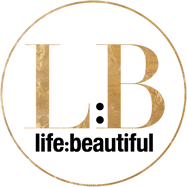
Departments
Make

Under Wraps
Scarves and shawls are must-have accessories for fall and winter. Choose from the design options shown here for your own wardrobe of fashion-forward accents. We tell you how.
Take a plain dress or coat and throw on a signature scarf . . . and voilà—a designer look. Wrap a sparkly shawl, clipped with a gemstone broach, around a black shirt for big drama eveningwear. Or for runway style, put an infinity scarf with a funky pattern over your teen’s sale-rack shirt. Purchased at the mall, these little numbers can cost $20 to $200 and up. Finding the color or pattern in the size and shape you want and at the price you need is easier when you make it yourself. For these designs, we created three basic shapes: the long rectangle scarf, the rectangle wrap and the infinity scarf.




long rectangle scarf
The most versatile scarf, the long rectangle, is easy to make from a strip of fabric. For a basic scarf cut fabric to the length and width needed and finish the edges by machine or hand stitching (see the stripe scarf, right top, plum-color velveteen scarf, right center, and purple and rust patterned scarf, right bottom).
Menswear-inspired scarves, opposite, are rectangles with a textured fabric trim. Two methods are used for making these scarves depending on if the fabric can be used as a single thickness or needs to be faced with the same fabric or a contrast fabric. To make the most efficient use of fabric, determine scarf lengths by the width of the fabric bolt. For extra long scarves you will need to seam two pieces together or cut the scarf in the direction of the weft. Scarves measure about 14-inches wide and 61- to 65-inches long. Trim widths of wool bouclé, velvet or faux or recycled fur adds about another 4- to 8-inches to the scarf length.
Heavyweight wools, such as the white wool scarf with faux fur trim, page 15, right, can be made of a single fabric thickness. Bind with bias tape or hem the long side edges and steam flat. Add fur trim to the bottom edges by cutting two pieces of fur the length desired and the width of the scarf plus seam allowances. Pin fur right sides together and sew the sides and bottom edges to make a pocket, clip corners and flip. Sew one upper edge of the pocket to the scarf end, right sides together. Work the raw edges into the upper edge of the pocket and pin the opening. Handstitch closed. Repeat for the opposite end.
Lightweight wools, such as plaids and stripes, opposite, are faced with matching fabrics. This can be done by cutting two scarf bodies and four trim pieces. Sew the trim to either end of each scarf body. Place the pieced scarf bodies right sides together and stitch around the perimeter leaving a small opening to turn. Clip the corners, flip and handstitch the opening closed. Press.
rectangle wrap
For an elegant wrap, cut fabric such as the designer metallic-thread woven, page 15, left, about 32 X 62 inches (alter measurements of scarf according to body size). Press the edges under to make a ½-inch hem. Blind stitch the hem and press.
Infinity scarf
The infinity scarf is a circle of fabric that can be doubled around the neck. Fabrics with an attractive selvedge edge may be left unfinished, otherwise edge with a decorative stitch or small rolled hem. A lightweight purple jersey knit, page 15, center, works best at providing soft draping. To make the scarf, cut fabric about 25 x 56 inches. Sew short ends together and trim close to the seam.
We want to keep in touch.
Don’t miss out on the latest Life:Beautiful updates, promotions and news.








